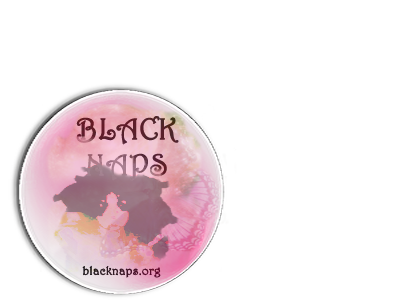The way a Black woman styles her hair can say much about her politics, social standing and even her economic status. The texture and length of her hair might suggest something about her pedigree and opportunities to find a mate.
The products a Black woman uses on her hair can even illuminate the limits of her dedication to the race, some people contend. The unique relationship a woman has with her hair bonds Black women the world over.
For Black people, hair is a complicated and complex issue that traces its roots to the chains of slavery. But that is only part of this largely untold story.
Black Hairstory
The history of Black hair has been a constant battle between straightening it or wearing it natural. Willie Morrow, who created the plastic Afro pick, and built a multi-million dollar Black-hair empire authored eight books about hair, including 400 Years Without a Comb, which begins, “The hair, it was rationalised, was proof positive that Blacks were not human.”
As the story goes, Blacks came to America from a world where their naturally curly, kinky hair was painstakingly cared for, styled and adorned based on ancestral customs and traditions.
When they were dragged in chains to a foreign land, the African slaves had their hand-carved wooden combs confiscated because they were seen as potential weapons. They were handed fine-toothed European combs that proved to be useless in their thicker, curlier hair. The Blacks “absorbed the Anglo-Saxon disdain for natural kinks and the long bitter war with his hair began,” writes Morrow.
Rebellious Hair
Even though Black people were violently forced to submit to their new environment, their hair refused to co-operate and didn’t relinquish it’s unique characteristic. In addition to being denied the tool for grooming, under the slavery regime there wasn’t exactly much time allotted for hygiene and beauty.
As a result, Blacks under slavery were condemned to constant scalp diseases and unhealthy hair that fell out in clumps. Female slaves took to wearing a head rag, usually made from discarded grain or feed sacks to cover up head sores and bald spots.They also used the rag to protect their exposed scalps from hovering flies.
More important, Morrow points out, the head rag was also used to conceal what slaves had come to assume was the testament to their inferiority and ugliness; their own hair.
At the beginning of the 19th century, slave masters began to allow more time for personal grooming, in order to improve the market value of their “property.” Slaves were given old combs and dull scissors for their hair instead of animal shears, Morrow writes.
The house slaves were given strict rules for their appearance; men were forced to keep their hair cut extremely short and the women had to keep their hair covered if it was braided, or straightened with a hot iron. When slaves were finally permitted to groom, the goal was to make it long and straight, emulating their “masters.”
Good Hair, Bad Hair
Black people continued to imitate the grooming traditions of their former “masters” even after slavery. So those with straight enough hair styled theirs after whites’ and were considered to have “good hair.” The slaves who retained their pure African hair, on the other hand, had “bad hair.”
A class system eventually emerged – which still persists – where Blacks with “good hair” and light skin were considered to be on top in the social order. Conversely, “bad hair” and dark skin assigned one to the bottom. People with “good hair” tended to keep it in the family, by only marrying others with similar hair and skin qualities: So the story goes.
From the 1920s, through the 1950s, straightening hair was a fact of life for many Black women, and even men. In the urban areas, women could go to beauty shops. However, in rural areas, particularly in the South, women straightened their hair at home. The hot comb was made of iron which was heated on the stove then used to straighten the hair.
Conked Out
The alternative to the hot comb for straightening hair was the congelene, or conk, for short. If applied correctly, the conk would relax a person’s natural curls until they were straight. The conk was usually a homemade mixture of lye and potatoes; it was notorious for burning the hair right off one’s head and leaving oozing scabs on the scalp.
In his autobiography, even the fearless Malcolm X must have cringed when he wrote: “The congelene just felt warm when Shorty started combing it in. But then my head caught fire. I gritted my teeth and tried to pull the sides of the kitchen table together. The comb felt as is if it was raking my skin off.”
Straightening hair became a rite of passage that many Black women today remember with differing emotions. “I remember the first time I got my hair straightened with a hot comb,” recalls Marcia Ann Gillespie, editor-in-chief of Ms. magazine. “Oh, God, I hated that. I hated the tyranny of it.” Today she wears her short, unstraightened, peppered gray hair in neat little twists.
Afro Revolution
The first revolution in Black hair occurred in the 1960s with the birth of the Afro. “It actually frightened mainstream America because it was more radical than what they had been used to,” says Bernice Calvin, founder of the Big Show Expo, Inc., the largest industry trade show for Black beauty professionals. “The Afro was a big, wild, striking thing.”
As the energy from the civil rights movement swept the land, it was accompanied by Black Nationalism and Black Pride. With the slogan “Black is Beautiful” resonating among African Americans, the need to straighten one’s hair in the image of whites’ was anathema.
The Afro, or “the natural,” as it was called, was more then just a hairstyle for Black Americans; it became synonymous with activism and political consciousness.
Eventually, the Afro became more of a style and less of a statement. White people with curly enough hair began to sport their own Afros, which diminished the rebellious quality of the movement.
Ironically, the Afro was also harmful to Black women’s hair, says Andrew Young, a Black hair stylist with over 30 years of experience, in New York. “I had Black people with straight hair who wanted an Afro, so I used a perm to make their straight hair nappy,” he recalls.
Some women lost much hair from picking the Afro out constantly in an attempt to attain Angela Davis-like proportions. So where have we arrived? Black women now have an exhaustive variety of hairstyles to choose from, including bone straight relaxers, big and small Afros, slick finger waves, drippy Jheri curls, intricately styled cornrows and braids, and past-the-butt weaves. Hair has been relatively de-politicised and the lines that used to distinguish styles have been blurred.
Natural
Consider that a “natural style” can now mean wearing braids constructed from yak hair and synthetic fibers; they may even look less authentic then a relaxed do. “My feeling is, it’s just about freedom,” says Marcia Gillespie, the Ms. editor. “We can’t say because of what’s happening on top of somebody’s head, we know what’s really going on inside their head.”
While there is a wider range of acceptance of different hair styles within the Black community nowadays, there is still conflict on some levels between those who chemically straighten and those who choose to go “natural.” Additionally, some women also say that white people, especially when it comes to hiring decisions, tend to discriminate against women who wear their hair in locks.
The tangled and painful history of Black hair has left a deep scar. Black people still qualify hair as either “good” or “bad.” The debate over “natural” and “straight” still causes disagreements; the continuous struggle to make Black hair “right” (white) still tugs at the conscience of many Black women today.
Author, Lori Tharps






















3 comments:
This whole concept of 'right hair' being white is quite disturbing. Especially, in that most people assume that black women do not naturally have regular/manageable wavy, straight, or curly hair.
For example, I come from a family that naturally have regular/manageable wavy to curly hair (in that it's not kinky and the stereotypical image of "black hair"). No one permed their hair nor needs to. We have the regular hair problem as everyone has. Whether it be it being to frizzy, split ends, or whatever.
So this assumption that 'white hair' and 'black hair' comes in one texture and appearance is the real issue. People need to just accept how God created them.
A.
Anonymous : typically I dont say "what people need to do", because... who am I ya know.
However, I was feeling the same as accept how god created them/us, that is why I made a decision to go natural, you know , how god created me. And I must say I loooove my decision. Thanks for stopping by , please do so often.
As salaamu alaikum,
very good read, very informative and educational. Thanks so much for posting it.
Post a Comment